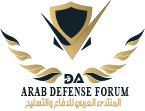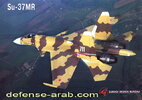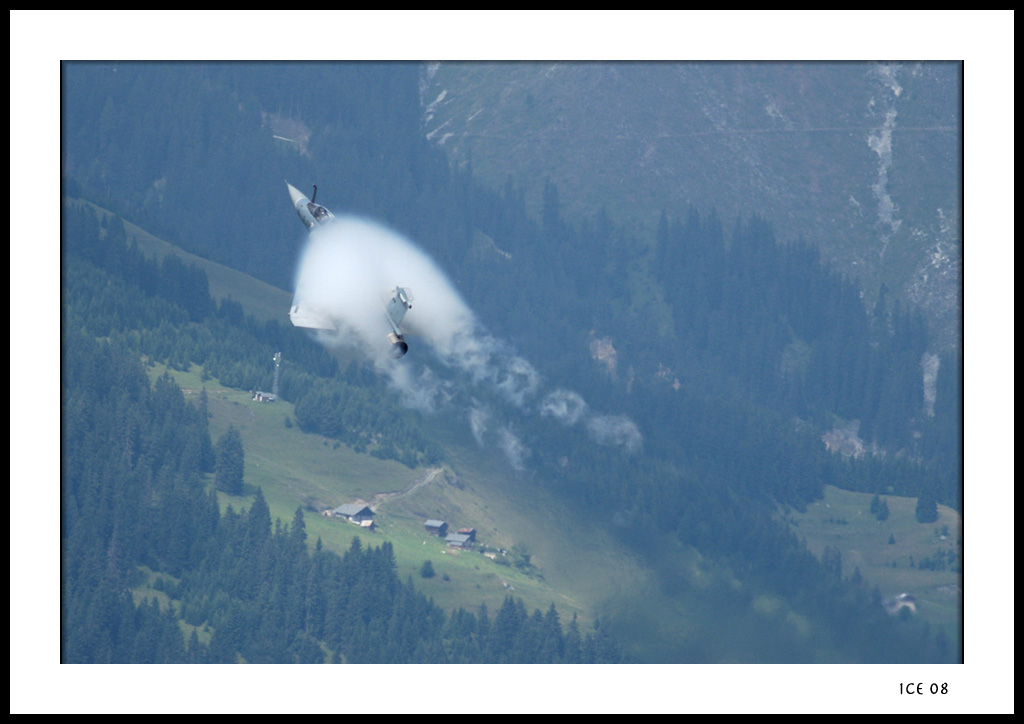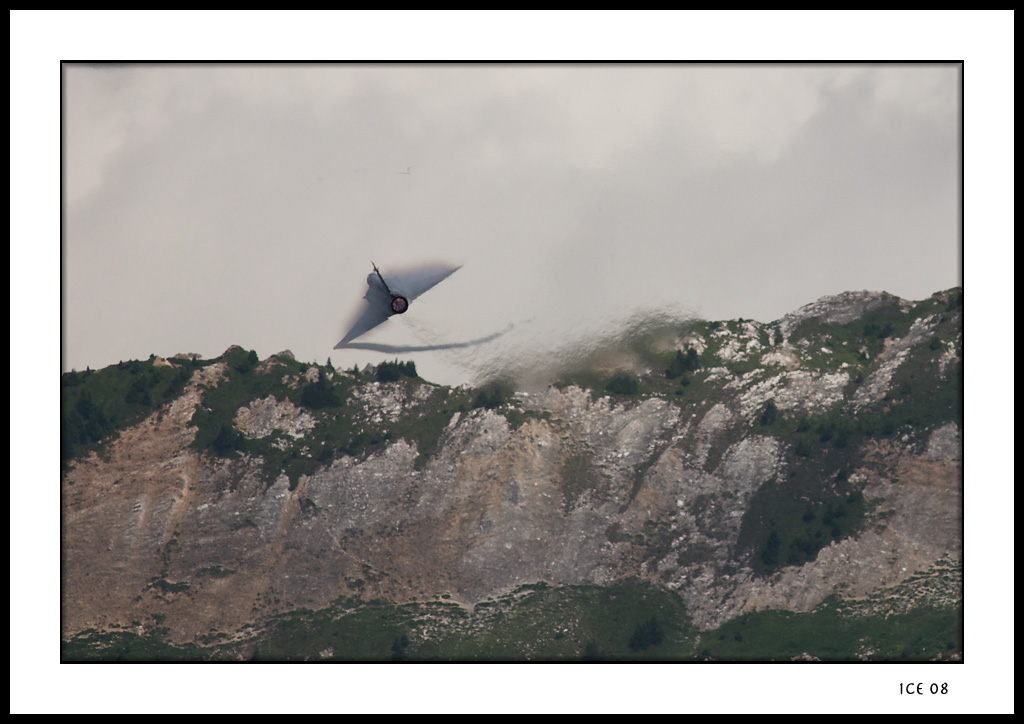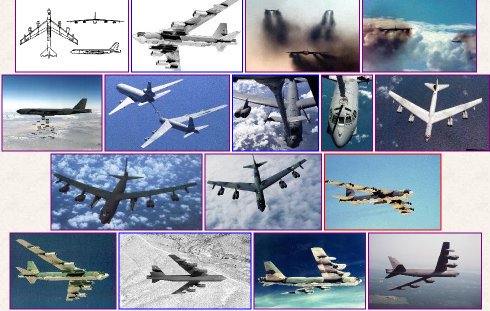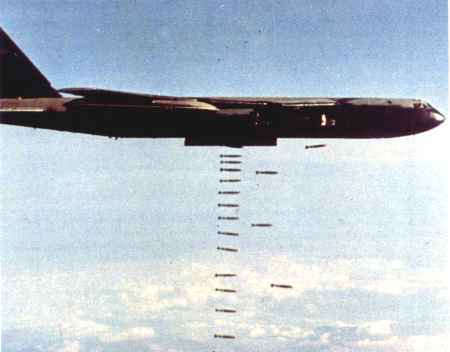تثبيت التطبيق
How to install the app on iOS
Follow along with the video below to see how to install our site as a web app on your home screen.
ملاحظة: This feature may not be available in some browsers.
أنت تستخدم أحد المتصفحات القديمة. قد لا يتم عرض هذا الموقع أو المواقع الأخرى بشكل صحيح.
يجب عليك ترقية متصفحك أو استخدام أحد المتصفحات البديلة.
يجب عليك ترقية متصفحك أو استخدام أحد المتصفحات البديلة.
الأن ضع صورة طائرتك المفضلة ومعلومات عنها
- بادئ الموضوع السفير
- تاريخ البدء
الطائرة الحربية المفضله هي F-35
هي أحدث طراز من الطائرات المقاتلة الأمريكية و هي لا تزال في قيد التجربة و لم تدخل الخدمة رسميا. اقصيت من المشاركة لاحقا لبعض الإعتبارات السياسية و عقابا لها لبيعها معدات للصين ثم أعيد إدخالها في البرنامج في 2 نوفمبر 2005. طائرة ال F-35 هي تطوير لطائرة ال F-22 Raptor أو هي تبني عليها فالمشكلة في ال F-22 أنها كانت غالية التكلفة. ال F-35 أقل تكلفة و يمكن إستعمالها في جيش المشاة و البحرية و الجو على السواء في حين أنه لو أعتمد تصميم ال أف 22 لكان يجب تصميم طائرة خاصة لكل جيش. من أهم المميزات لل F-35 كونها تستعمل تقنية التخفي stealth technology و لكنها على عكس الطائرات الأخرى التي تمتلك هذه القدرة و لا تمتلك قدرة جيدة على المناورة مثل طائرة ال ب 2 و ال F117 فإن ال F-35 تمتلك قدرة كبيرة على المناورة.
ثانيا ..اف 22


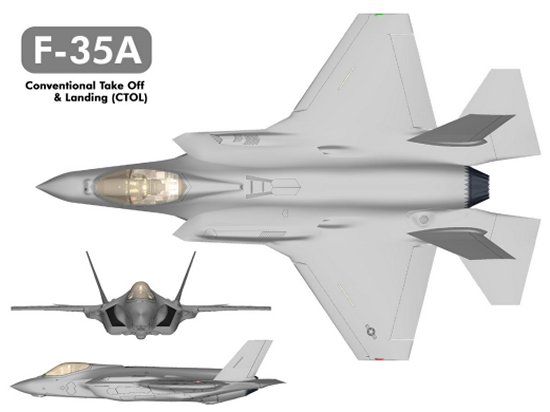
موضوع اكثر من رائع وان شاء الله هنزلكم صور ومعلومات عن الطائره المفضله لدى
قد نختلف حول الاسباب لكني أفضل طائرتين " بغض النظر حول التقنية " .
السخوي 27 والتي رايتها اول مرة في عرض في سنة 1997 ولأزال أذكر بشكل جيدة الكوبرا التي قامت بها .

والثانية هي قاذفة وهي السخوي 24 الطائرة التي توصف بكابوس قادة الحرب .
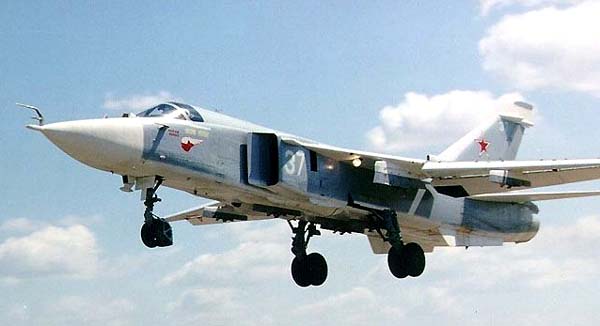
السخوي 27 والتي رايتها اول مرة في عرض في سنة 1997 ولأزال أذكر بشكل جيدة الكوبرا التي قامت بها .

والثانية هي قاذفة وهي السخوي 24 الطائرة التي توصف بكابوس قادة الحرب .

بسم الله
والطائره b2 مفيش حد ذكرها ليش
فى نظرى هى الاقوى على الاطلاق
اريد ان يوضح لى احد امكانيات هذه الطائره ولا يضع لى رابط لان كلام المواقع كله متشابه بل متطابق
والى اى الاجيال تنتمى هذه الطائره
وهل هى قادره فعلا على حمل 14 قنبله ذريه
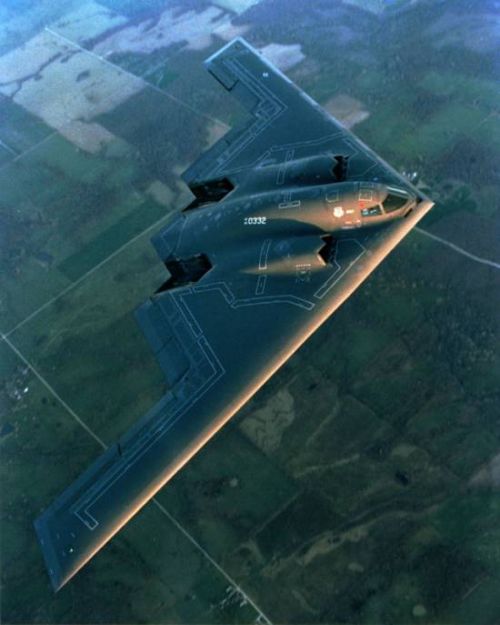
والطائره b2 مفيش حد ذكرها ليش
فى نظرى هى الاقوى على الاطلاق
اريد ان يوضح لى احد امكانيات هذه الطائره ولا يضع لى رابط لان كلام المواقع كله متشابه بل متطابق
والى اى الاجيال تنتمى هذه الطائره
وهل هى قادره فعلا على حمل 14 قنبله ذريه

السوخوي

ACIG Database
Sukhoi Su-30 MKI
By Manoj Raj
Jan 7, 2004, 17:10
Sukhoi Su-30MKI 
ACIG Database
Sukhoi Su-30 MKI
By Manoj Raj
Jan 7, 2004, 17:10

Origins:
The Su 30 MKI is a customized Su 27 PU (ASCC codename: Flanker) built according to Indian specifications. The M is for Modernized, K for Commercial and I for Indiski (India). It is probably the first time that an aircraft has been built in Russia for a foreign customer specifications.
The Su 30 was evaluated along-with the Mirage 2000-5, and found to be cheaper, hence was chosen. The Su 27 was first evaluated by the IAF in 1994, when a team led by the CAS (ACM S.K.Kaul) in Russia.
The contract for the first 40 Su 30 fighters was signed in 1996, and the aircraft originally supposed to be delivered in batches and in a phased manner from 1997 through till 2000, with each batch being progressively more improved that the previous batch.In 1998, the IAF signed another contract for the delivery of a further 10 aircraft, originally scheduled to be delivered to Indonesia.
In October of 2000, a Memorandum of Understanding was signed, which paved the way for a complete Transfer of Technology and the manufacture of a further 140 Su 30 MKIs in India by the Hindustan Aeronautics Limited(HAL). The deliveries were not with out their delays, which were flayed in the India media, however, the first batch of Su 30 MKIs were delivered in mid 2002 to the Lohegaon AFB in Pune.
There are now 2 squadrons, the No 24 Hunting Hawks with the Su 30 MKs and the No. 20 Lightnings with the Su 30 MKIs. The full spec Su 30 MKI is however not delivered, with a few software updates remaining.

Specifications:
Physical Dimensions:
- Length: 21.9 mts
- Span: 14.7 mts
- Height: 6.4 mts
- Weights:
Take Off weights; Normal: 24,900 kgs, Maximum: 34,500 kgs
- Service ceiling: 17.3 kms
- Range:
On internal fuel only: 3000 kms, With on mid-air refueling: 5200 kms
G limits: +9/ -?
- Climb rate: 45,300 feet/min
- Speed:
At sea-level: 1350 kmph, at 11,000 mts: Mach 2+
- Engines:
Su-30K/Su-30MK: 2xAl 31F Turbofans, each rated at 27,500 lbs, full afterburner thrust
Su-30 MKI: 2xAl 31FP Turbofans, each rated at 29,400 lbs full afterburner thrust. The Al 31 FPs has thrust vectoring nozzles. The nozzles are capable of deflecting 32 degrees in the horizontal plane and 15 degrees in the vertical plane.
The engines reportedly have an MTBO of ~1000 hours, while the TV nozzles have an MTBO of ~250 hours. Su 30 MKIs also can use the Mk 32.B buddy-buddy refueling pods.
Cockpit
The crew is provided by zero-zero KD-36DM ejection seats which have a slightly modified communication/oxygen interface block compared to the earlier Su-27 blocks. Rear seat is raised for better visibility. The cockpit will be provided with containers to store food and water reserves, a waste disposal system and increased amounts of oxygen. The KD-36DM ejection seat is inclined at 30�.
The French company Sextant Avionique will supply six liquid colour displays, five MFD 55s and one MFD 66, for both the pilot and his WSO (Weapons System Officer), the Totem inertial guidance system (dual-INS) with the GPS technology and the VEH 3000 holographic HUD.
The pilot also has the Gzarkhov 45A HMS (Helmet Mounted Sight) unit, which can guide the R 73s and the R60 MKs.
Airframe
The Su 30 MKI is a twin-finned aircraft. The airframe is constructed of titanium and high-strength aluminium alloys. The engine nacelles are fitted with trouser fairings to provide a continuous streamlined profile between the nacelles and the tail beams. The central beam section between the engine nacelles consists of the equipment compartment, fuel tank and the brake parachute container. The fuselage head is of semi-monocoque construction and includes the cockpit, radar compartments and the avionics bay. Su 30 MKIs also have a high percentage of composites used in the air-frame.
Stability and control are assured by a digital FBW. The canard notably assists in controlling the aircraft at large angles of attack (AoA) and bringing it to a level flight condition.

Avionics
The main sensor on the Su 30 MKI is the N011M Phased Array radar. It is a multi-mode dual frequency (X- and L-band channels, NATO I and D band) radar. It detects targets using a Non Co-operative Targeting method. It is designed to detect fighter-sized targets at 150-160 kms range, and can track 20 targets, while engaging 8. It is capable of interleaving air-to-air and air-to-ground modes. In an air-to-ground mode, it can acquire surface targets at ranges of up to 200 km (and for large resolution targets, upto 400 kms) and provide ground-mapping, terrain-following, and terrain-avoidance functions. Small ground targets, like tanks, could be detected out to 40-50 km.
- Air-to-Air Modes: Velocity Search, Range While Search, Track While Scan, target ID, close combat modes.
- Air-to-Surface Modes: Real beam mapping, DBS mapping, SAR mapping, moving ground target selection, tracking and measuring of ground target coordinates.
Anti-shipping Modes: Sea surface search, moving sea targets selection, tracking and measuring of sea target coordinates, sea target ID.
Antenna diameter is 1m, antenna gain 36dB, the main side lobe level is -25dB, average side lobe level is -48dB, beam width is 2.4 deg with 12 distinct beam shapes. The antenna weighs 100-110kg. It is both mechanically and electronically scanned to give increased field of view over a fixed phased array antenna.
The Bars radar uses an Indian Radar controller, under the Project Vetrivale (Lance of Victory). The project also has developed the mission computer and the display processors for the aircraft.
The radar can also serve as a command post for other aircraft, with target coordinates being automatically transferred to at least four other aircraft using a secure data link.
The aircraft has an opto-electronic surveillance & targeting system which consists of an IR direction finder, laser rangefinder and helmet mounted sight system. The OLS-30M, developed by UOMZ company has a vibration-proof receiver, micro-cryogenic system, improved service life and new software, with respect to the earlier OLS-27. Range is claimed to be 90km in pursuit and 40km head-on.
The communications equipment comprises VHF and HF radio sets, a secured digital telecommunications system, and antenna-feeder assembly. It mounts an automatic noise-proof target data exchange system, which provides for coordination of the actions of several fighter aircraft engaged in a group air combat. It is under the INCOM series, by HAL.
Self Defense Systems
The self-defence suite incorporates a newly developed accurate Radar Warning Receiver (RWR), called the Tarang Mk. II. The Su 30 MKI incorporates a number of chaff/ flare dispensers and active jammers. The Tarang system is a modified version of that fitted to the MiG 21 Bison. The Tarang was also developed under the Project Vetrivale.

Armament
Maximum External load: 8000 kgs.
Internal gun: GSh-301, 30 mm, single barrel gun with a capacity of 170 rounds. Normally however, only 150 rounds are loaded. The gun is said to be very accurate and has a high rate of fire of 1500-1800 rounds per minute. Range against ground and air targets is 200-800 mts and 1200-1800 mts respectively.
Hardpoints:
The Su 30 MKI has 12 hardpoints for carrying various weapons, including air-to-air and air-to ground munitions. This can be increased to 14 using multiple ejector racks.
Air To Air Missiles:
- R-77/RVV-AE - up to 6 (Range: Head-On 100 kms, ARH)
- R-27RE1/TE1/EP - up to 6 (Range: Head-On 70-130 kms, SARH/ IR/ Passive)
- R-73RDM1/2 - up to 6 (Range: 30 kms, IR)
Air-To Ground missiles:
- Kh-29L/T - up to 6 (Range: 30/ 12 kms, Laser/ TV)
- Kh-31A/P - up to 6 (Range: 70 kms, Active/ Passive)
- Kh-59M - up to 2 (Range 200 kms, Active)
Guided Munitions:
- KAB 500 KR/ 1500 KR - up to 6
- KAB 250L/500L - up to 3
Unguided Munitions:
- FAB-500T - up to 8
- FAB/OFAB-100/-120/250-270 - up to 28
- RBK-500 - up to 8
- S-80M/S-8MB - up to 80
S 25 OFM-PU � Upto 4 pcs

References
Discussions on the ACIG forum (www.acig.org )
Vayu Aerospace Review
http://www.overscan.co.uk/Avionics.html
www.bharat-rakshak.coms IAF page: http://www.bharat-rakshak.com/IAF/Aircraft/Specs/index.html
Vayu-Sena's Su-30MKI info page: http://vayu-sena.tripod.com/info-su30mki.html#5
Aircraftstories Web Page: http://www.flanker.free.fr/mono/Texte/su-30mki/su30mki.htm
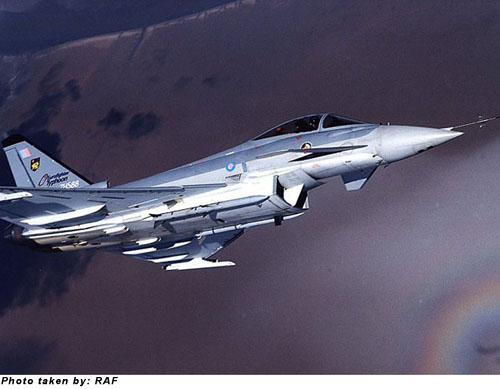



التايفون
الطائرة المفضلة هي الميج 35
تعد الميغ-35 أحدث المقاتلات الروسية التي ظهرت لأول مرة رسمياً في معرض الهند الجوي 2007.
ببساطة فإن هذه الطائرة ترى بأعين حادة جداً وتفكر وتقيم الوضع تلقائياً.
قبل البدء بالحديث عن هذه المقاتلة التي لم يستطع أحد في المعرض رفع نظره عنها، هناك ما يجدر ذكره حول هذه المقاتلة وتسميتها بالميغ-35.
حيث أن هذه المقاتلة ليست كما يظن البعض بأنها تسمية أخرى لمشاريع روسية قديمة.
أول ظهور للاسم كان للمشروع MiG-1.42 التي صممت لمنافسة الـ F-22 والتي قيل عنها أنها ستتفوق على نظيرتها الأميركية المذكورة.
هناك من يعزي تعدد ذكر الرقم 35 وراء أسماء المقاتلات الروسية السابقة من نوع ميغ بأخطاء تسمية من قبل المجلات والمصادر غير الرسمية.
لكن رأيي الشخصي هو تضليل للأجهزة الاستخبارات الغربية بما فيها الولايات المتحدة الأميركية والأوروبيين. حيث أنه لم يخطر ببال أحد أن يكون مشروع الميغ-35 مشروعاً مستقلاً بحد ذاته بل لفت هذا الرقم انتباهنا نحو الأو في تي أو المشاريع الملغية السابقة ولم ينتبه أحد للمشروع الجديد.
تعد هذه الطائرة أول مقاتلة روسية جديدة بشكل كامل بعد سقوط الاتحاد السوفييتي.
بالعودة إلى الميغ-35 الجديدة والتي سأخص الكلام عنها وحدها اعتباراً من هنا، فإن هذه المقاتلة تنتمي إلى مقاتلات الجيل الرابع++. وقد استغرق تطويرها حوالي العقدين أو أكثر بقليل.
إن الميغ-35 أو إل إس MiG-35 OLS تعتبر نظاماً ذكياً من الناحية التقنية البصرية للقتال الجوي السريع بحيث أن هذا النظام البصري يمكنه أن يكشف الأهداف الجوية بدون حارق خلفي على بعد أكثر من 45 كم وتخمين هوية الهدف عن بعد 15 كم ثم تمييز هذا الهدف بصريا وبدقةً على بعد 10 كم.
أما من ناحية الهجوم الأرضي فهذا النظام البصري يكشف الدبابات على بعد 15 كم ويميز حاملات الطائرات على بعد 60-80 كم. ويميز نوع الدبابة على بعد 10 كم في حين أنه يميز نوع حاملة الطائرات على بعد 60 كم.
هذا من ناحية الكشف والتمييز أما من ناحية التخمين فإن الهدف الأرضي مهما كان نوعه فإن هذه الطائرة تخمن نوع الهدف عن بعد 20 كم.
يقول رئيس شركة التصميم أن هذه التقنية بدأت بالظهور منذ فترة وأرادوا العمل عليها بقوة حتى أصبحت تعتبر تقنية فضائية مركبة على الميغ-35 بشكل فعال. وبهذا فقد ضمت هذه المقاتلة أربع أنظمة بصرية.
 [/url][/IMG]
[/url][/IMG]
تعد الميغ-35 أحدث المقاتلات الروسية التي ظهرت لأول مرة رسمياً في معرض الهند الجوي 2007.
ببساطة فإن هذه الطائرة ترى بأعين حادة جداً وتفكر وتقيم الوضع تلقائياً.
قبل البدء بالحديث عن هذه المقاتلة التي لم يستطع أحد في المعرض رفع نظره عنها، هناك ما يجدر ذكره حول هذه المقاتلة وتسميتها بالميغ-35.
حيث أن هذه المقاتلة ليست كما يظن البعض بأنها تسمية أخرى لمشاريع روسية قديمة.
أول ظهور للاسم كان للمشروع MiG-1.42 التي صممت لمنافسة الـ F-22 والتي قيل عنها أنها ستتفوق على نظيرتها الأميركية المذكورة.
هناك من يعزي تعدد ذكر الرقم 35 وراء أسماء المقاتلات الروسية السابقة من نوع ميغ بأخطاء تسمية من قبل المجلات والمصادر غير الرسمية.
لكن رأيي الشخصي هو تضليل للأجهزة الاستخبارات الغربية بما فيها الولايات المتحدة الأميركية والأوروبيين. حيث أنه لم يخطر ببال أحد أن يكون مشروع الميغ-35 مشروعاً مستقلاً بحد ذاته بل لفت هذا الرقم انتباهنا نحو الأو في تي أو المشاريع الملغية السابقة ولم ينتبه أحد للمشروع الجديد.
تعد هذه الطائرة أول مقاتلة روسية جديدة بشكل كامل بعد سقوط الاتحاد السوفييتي.
بالعودة إلى الميغ-35 الجديدة والتي سأخص الكلام عنها وحدها اعتباراً من هنا، فإن هذه المقاتلة تنتمي إلى مقاتلات الجيل الرابع++. وقد استغرق تطويرها حوالي العقدين أو أكثر بقليل.
إن الميغ-35 أو إل إس MiG-35 OLS تعتبر نظاماً ذكياً من الناحية التقنية البصرية للقتال الجوي السريع بحيث أن هذا النظام البصري يمكنه أن يكشف الأهداف الجوية بدون حارق خلفي على بعد أكثر من 45 كم وتخمين هوية الهدف عن بعد 15 كم ثم تمييز هذا الهدف بصريا وبدقةً على بعد 10 كم.
أما من ناحية الهجوم الأرضي فهذا النظام البصري يكشف الدبابات على بعد 15 كم ويميز حاملات الطائرات على بعد 60-80 كم. ويميز نوع الدبابة على بعد 10 كم في حين أنه يميز نوع حاملة الطائرات على بعد 60 كم.
هذا من ناحية الكشف والتمييز أما من ناحية التخمين فإن الهدف الأرضي مهما كان نوعه فإن هذه الطائرة تخمن نوع الهدف عن بعد 20 كم.
يقول رئيس شركة التصميم أن هذه التقنية بدأت بالظهور منذ فترة وأرادوا العمل عليها بقوة حتى أصبحت تعتبر تقنية فضائية مركبة على الميغ-35 بشكل فعال. وبهذا فقد ضمت هذه المقاتلة أربع أنظمة بصرية.

المواضيع المشابهة
- الردود
- 1
- المشاهدات
- 2K
- الردود
- 72
- المشاهدات
- 20K
- الردود
- 14
- المشاهدات
- 4K
- الردود
- 3
- المشاهدات
- 34K
- الردود
- 1
- المشاهدات
- 3K
